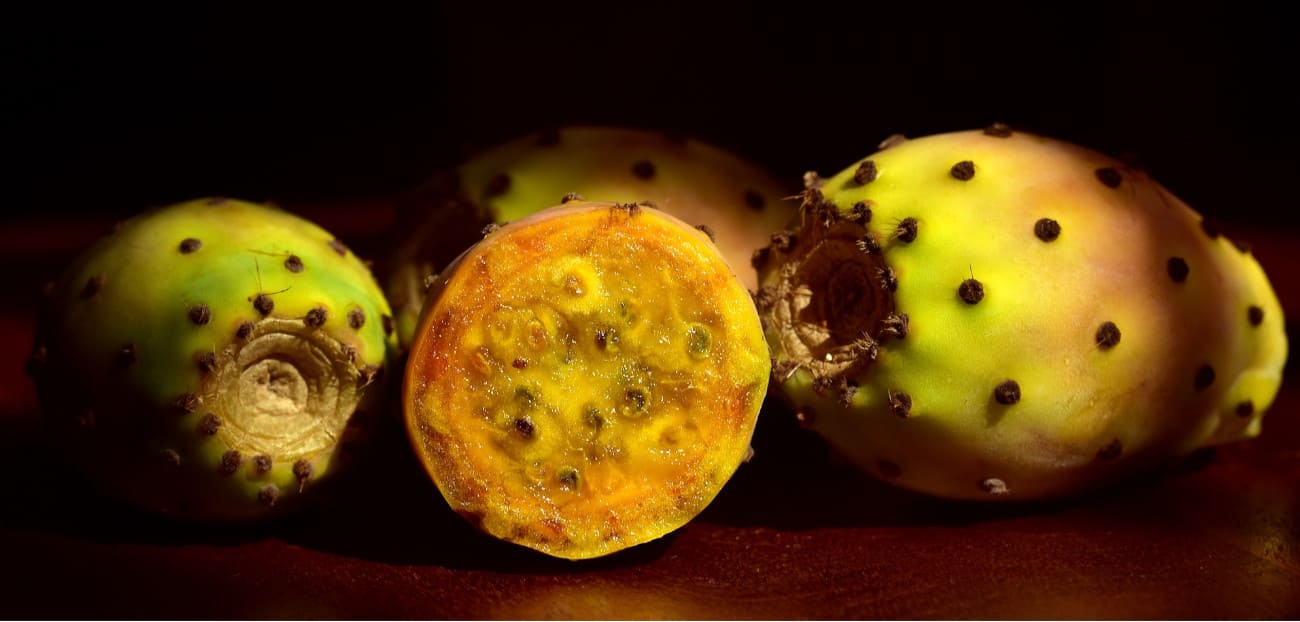
HOW TO RECOGNIZE A QUALITY PRICKLY PEAR SEEDS OIL
How to recognize a quality prickly pear seeds oil ? This is an important question ! The prickly pear seeds oil is a rare and precious product. It has beneficial properties for the skin care. You must be very careful not to incur purchases that at first sight seem convenient. But which hide many pitfalls in the composition. Let us investigate the real quality of the product.
Roviti natural cosmetics: VISIT OUR SHOP.
With a simple search on the internet you can find many sites that offer prickly pear seeds oil for sale. From Amazon to sites of sellers more or less specialized in the product. The offer is vast with prices that vary significantly. And with more or less guarantees of a real natural product. Finally it is packaged in elegant bottles of all types and sizes.
How to recognize quality prickly pear oil – a special product
First of all, it is important to know that the production of quality prickly pear seeds oil requires intense and strictly manual work. From harvesting the fruit to squeezing the seeds to obtain the precious nectar.
To produce just one liter of fine pure oil, 2000 kg of fruit are required. These cactus fruits have to be manually harvested and without any kind of mechanical means. The seeds are then extracted from the fruit. After that they are washed and cleaned. Finally they are left to dry in the sun for at least 3 days.
First, the seeds are placed in special presses for cold-extraction of the oil. We underline that the best oil is obtained from the first pressing. Second, the oil undergoes 2 further filtering steps. We use filters made only of natural materials. Finally we obtain an absolutely pure and waste-free product. That is the Roviti fine and pure prickly pear oil !
Beware of prickly pear seeds oil at slipped prices
All these steps require the work of many people and a lot of time. Only for pressing it takes 48 hours to obtain 1 liter of oil. Added to this are the costs of certifications, quality controls, packaging and marketing.
It therefore seems clear that if the oil is offered at too low a price, it is not true pure, natural, cold-pressed prickly pear seed oil with all the necessary certifications. Very often it is oil coming from the macerated fruit. It is much cheaper but certainly with much less presence of the precious active ingredients. Therefore less effective.
In some cases, it is oil that has been “blended” with other less “noble” oils (such as sunflower oil). Therefore also in this case it is a product that, in the best of cases, is the equivalent of fresh water. In some cases we have observed the presence of toxic ingredients which can cause significant damage to the skin.
How can you recognize high quality prickly pear seeds oil ?
The advice is to always focus on the following points to choose a quality prickly pear seed oil.
Price
If the price is too low it is certainly a first alarm signal. Be attentive to the “attractive” offers on online “market places”. It is a low-margin product ! It is not convenient for the manufacturer to pay commercial intermediaries. If possible, look for a product offered directly by the manufacturer.
Content
The bottle that contains prickly pear seeds oil must be made of darkened glass to avoid oxidation. And the maximum content must be of 30 ml. Our company, Roviti srl, produces two types of bottles that contain prickly pear seeds oil. One of 15 ml and the second of 30 ml. Both can be bought online by accessing the ROVITI SHOP.
Smell and color of the prickly pear seeds oil
The smell is pleasant, typical of vegetable oils, similar to olive oil but with almond notes. The color is yellow, sometimes with some shades of green. Pay attention to colors tending to red or brown. This means that there is a risk of “blended production” or already oxidized oils.
Label information
Read the label carefully ! Sometimes the indication on the product is simply: Prickly pear oil. This suggests that it is macerated (much less valuable and effective). Those who produce the real quality oil extracted from the seeds have every interest in identifying their product as Prickly pear seeds oil, cold pressed.
Certifications
The more there are and the more clearly stated on the packaging, the better. Obviously the declaration “BIO” or “DOP” is not enough.
There must be a reference code and the data of the production manager / laboratory. If you wish to learn more, these certifications and all related documentation must be easily obtainable from the manufacturer.
Or you obtain more information from its website or by contacting the latter directly. It is recommended to buy products with local certifications controlled by national official agencies.
Dates and deadlines
Each package must bear a lot number. From this number it is possible to trace the date of packaging and the date of pressing. Finally, this information must be obtainable from the manufacturer upon simple request.
The prickly pear oil can be preserved optimally even for 2 years (unopened). For long term preservation extreme temperatures must be avoided. In addition, the bottle that contains it must prevent the absorption of light. The bottles must be opaque. Or completely darkened.
The validity period after opening
Finally, it is advisable to observe the P.A.O. identified by a symbol of an open jar with a small number inside. This number refers to the validity period after opening. For example, if the number “6” appears, it means that from the moment it is opened, the product can be stored without problems for 6 months.
Chemical analyses of the prickly pear seeds oil
Prickly pear seed oil contains many valuable elements such as vitamin E and Omega 6. This content make it a powerful anti-aging. It is therefore important to know the exact values of its chemical composition. That must be certified by appropriate laboratory analyzes.
A good prickly pear seed vegetable oil must contain the following values:
-
- Linoleic acid: 56 to 64%.
- Oleic acid: 15 to 26%.
- Palmitic acid: 10 to 12%.
- Stearic acid: 3 to 6%.
- Linolenic acid: <1%.
- Palmitic acid: <1%.
The laboratory analyzes must not be generic. They must refer to the lot of the product you are going to buy. Again, the manufacturer must easily provide you with a copy of the laboratory tests. Therefore you only have to make a simple request.
Origin of the product
The prickly pear plant has been known for its beneficial properties for over 6 centuries. It grows naturally in the hot and dry climates of Central America and the Mediterranean basin. Sicily is one of the largest producers in the world. And with best quality due to the very special soil characteristics.
Recent studies published in important scientific journals (see our section on “scientific publications”) have shown, among the most important elements, the significant presence of polyunsaturated fatty acids (Omega 6) and Vitamin E in Sicilian fruits. Much higher than the values found in fruits of other geographical areas.
These characteristics are also conferred by the particular geographical location at the foot of the Etna volcano. In this area the soil is very rich in precious minerals. It makes the quality of the fruit absolutely unique in terms of chemical composition.
Therefore, in choosing a quality product, the origin and place of production play a very important role in the final choice. Roviti natural 100% bio oils are used to produce very high quality cosmetics.
Views: 952


